
Present Company Excepted
While I’ve railed against the status quo in academe in this series of posts (of which this is the last), let me take a moment to testify that I’ve had the privilege of meeting a considerable number of dedicated university-based scholars, dedicated teachers, and equally dedicated teaching artists. Even some fine administrators. I’ve known more than a few of them personally, and some I’ve considered friends as well as colleagues.
Many made notable contributions to the field ― with their research and writings, with their artwork, with their teaching practice and pedagogy. A few of them have been younger than I; most have come from my cohort and the generation or two preceding mine. With few exceptions, they’ve long since retired; a number of them have passed on. I think they know who they are, and know that I intend them no disrespect with my observations and critiques ― versions of which I’ve heard from their own lips, for decades. Unless the shoe fits, don’t assume I expect you to wear it.
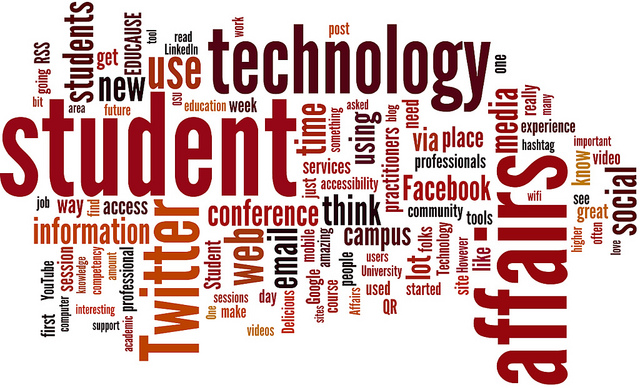
Education Word Cloud, Eric Stoller, Creative Commons
If the way things now stand took shape on their watch (and on mine, I should add), I consider their accountability, and my own, limited. Larger forces at play ― institutional, cultural, economic ― reshaped higher education in my lifetime. Speaking from experience, I can certify that individual faculty and administrators had little say in these matters; our opposition, pockets of which did exist, proved quixotic at best. I have nothing but respect for those who fought the good fight with me for that lost cause.
Fries with That?
The post-secondary education system here in the States has changed so dramatically, in so many ways, since I began studying therein in 1960 and teaching in the early ’70s that this environment bears hardly any resemblance to that earlier iteration, and its populations ― student, faculty, administration ― strike me as radically different in kind.
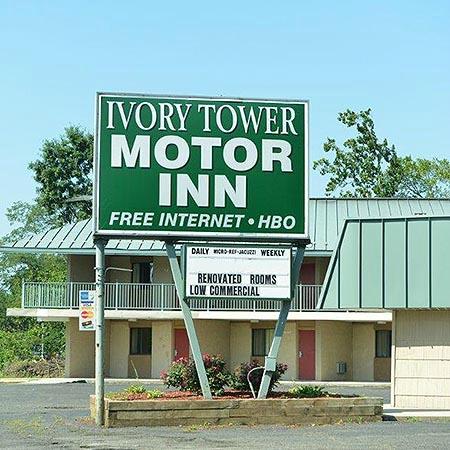
Ivory Tower Motor Inn, Green Brook, NJ
I’ve addressed the broad-brush laments of the past several posts in this series (and others preceding them) to the current educational environment and some of its earlier stages. It arrived not suddenly and full-blown but incrementally. It pervades the entire educational system, from pre-K through postgraduate, so the question of whether this happened all at once, trickled down, or wicked up becomes moot. (Read this letter of resignation from a “a veteran seventh-grade language arts teacher in Frederick, Maryland” who has opted to remain anonymous while finishing out her last semester.)
Granted my misgivings concerning the academic world’s disdain for non-jargonized writings, and its uneasiness in regard to genuinely independent scholarship and criticism, I consider it at best unlikely that a robust support system for serious but accessible criticism of any art will ever emerge from within programs in art history, photo history, etc., much less from within studio programs in any creative medium. And while programs in cultural journalism can advise their students to develop specific expertise, or even require them to do so, as soon as they walk through the door of, say, the art history department, they’ll come up against the attitudes and prejudices enumerated in my previous post.
The Origin of Critics
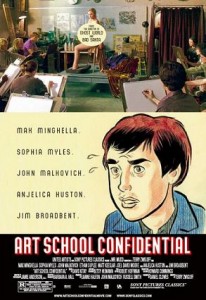
Art School Confidential (2006)
In the absence of any encouragement of such projects from within the post-secondary system, coupled with minimal opportunity at and minimal compensation from print and online platforms for such efforts, and the fact that no group of professionals in any of the arts has ever demanded and supported critics, I consider it miraculous when a serious critic of any medium ― an Arthur Danto, say — steps up to bat.
Under those circumstances, we can hardly feel surprised that, taking photography as our example, the medium’s move since 1970 from marginal to central in contemporary art has generated dozens of photo-specific museums, hundreds of new museum departments of photography, hundreds of photo galleries and private dealers with that specialization, a healthy collecting market, an international festival circuit ― and a remarkable paucity of platforms for criticism (solo acts like mine on the blogosphere aside) and a scarcity of committed “knowledge-based” photo critics. Right now, New York City, certainly one of the major international hubs for photography and photo-based art, has only two or three active and knowledgeable critics of photography ― the same number it had in 1974, four decades ago, when the photo scene here was a fraction of its current size. Pathetic.
I don’t expect any component of the post-secondary educational system to change in ways that work substantially to breed critics. I don’t expect the publishing industry to al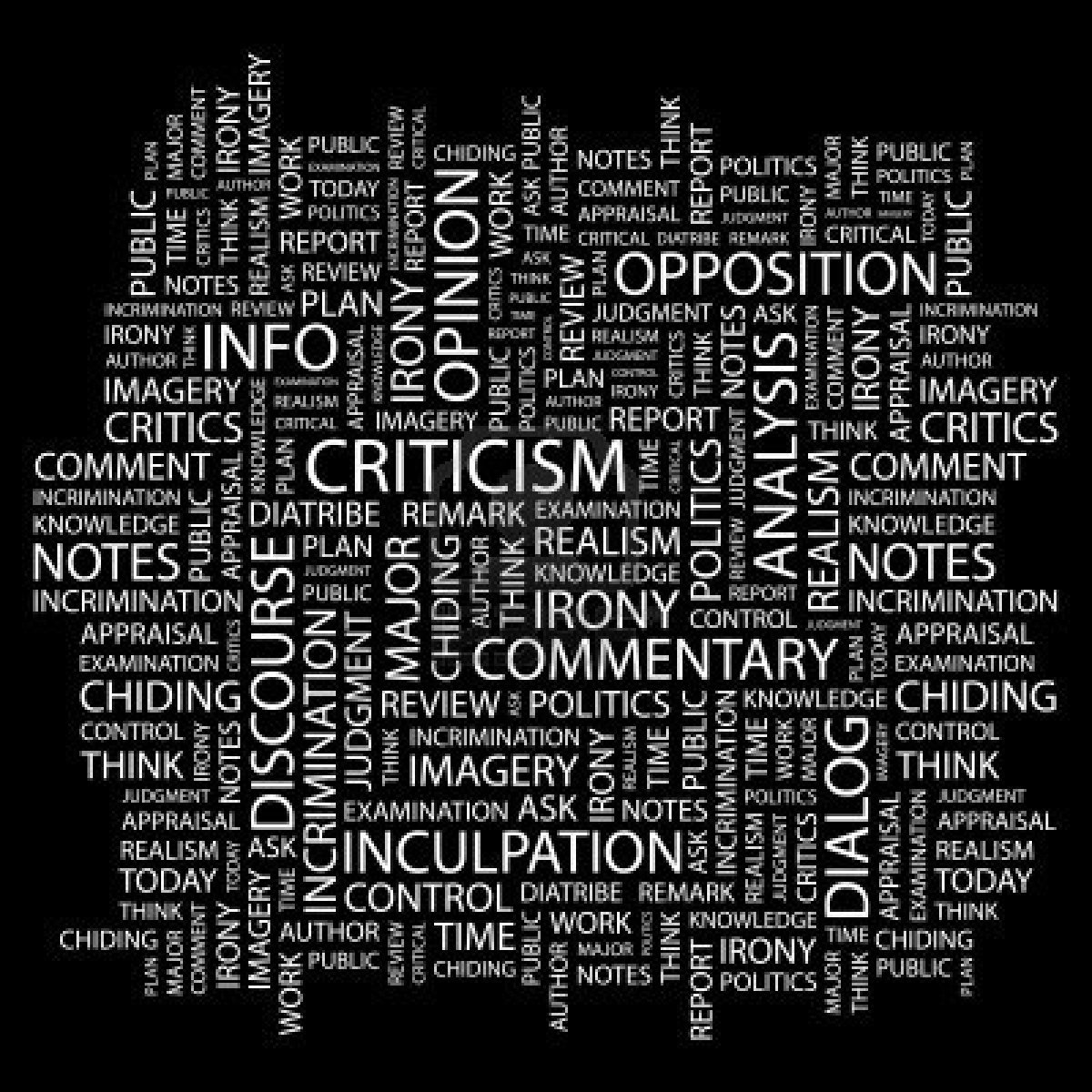 ter course in ways that nurture critics or support them financially. My faint but persistent hope for the future of photo criticism lies in the fact that (in my opinion, anyhow) the important questions about the medium, past, present, and future, have barely been asked and, at best, answered only provisionally. There’s important work to be done. That’s what drew me, and I hope it’ll draw some who will follow.
ter course in ways that nurture critics or support them financially. My faint but persistent hope for the future of photo criticism lies in the fact that (in my opinion, anyhow) the important questions about the medium, past, present, and future, have barely been asked and, at best, answered only provisionally. There’s important work to be done. That’s what drew me, and I hope it’ll draw some who will follow.
I don’t count on that. Thomas E. Patterson’s new book, Informing the News (Vintage Books, 2013), with its call for “knowledge-based journalism,” triggered this series of posts. Patterson calls on the educational system through which pass many young journalists today (especially those who expect to go into news reporting) to point them toward opportunities for formal study that will steep them in the literature of the area in which they plan to specialize in their professional work ― science, sociology, economics, politics. A laudable idea, until you place it alongside the recent revelations that most published research findings are false.
Piled Higher and Deeper
Indeed, “Why Most Published Research Findings Are False” serves as the unequivocal title of John P. A. Ioannidis’s recently published paper in the Public Library of Science. Apparently, scientists have begun to find that they can’t duplicate the results indicated in many published papers ― including papers on which other research depends, papers used to support everything from the manufacturing of medical drugs to decisions on public policy.
![]() In 2012 the highly reputed oncologists C. Glenn Begley and Lee M. Ellis reported in the journal Nature that of 53 “landmark” cancer studies they’d managed to replicate only six ― a little over ten percent. Nature, a primary platform for serious research in biology and related fields, has since established an online archive for what it calls ” irreproducible research” ― papers submitted to it whose results no one can replicate or verify. (Not to be confused with the delightful Journal of Irreproducible Results, which satirizes the scientific method.)
In 2012 the highly reputed oncologists C. Glenn Begley and Lee M. Ellis reported in the journal Nature that of 53 “landmark” cancer studies they’d managed to replicate only six ― a little over ten percent. Nature, a primary platform for serious research in biology and related fields, has since established an online archive for what it calls ” irreproducible research” ― papers submitted to it whose results no one can replicate or verify. (Not to be confused with the delightful Journal of Irreproducible Results, which satirizes the scientific method.)
George Johnson’s New York Times piece of January 20, 2014, “New Truths That Only One Can See,” explores the ramifications of this state of affairs for the scientific community and its consequences for the citizenry. Political scientist Michael Suk-Young Chwe approaches this problem from a much different angle (what would Jane Austen do?) in “Scientific Pride and Prejudice,” his January 31 New York Times op-ed piece. I recommend them both.
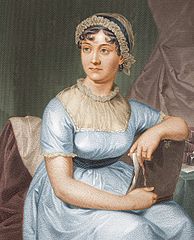
Jane Austen, from a drawing by her sister Cassandra. “Courtesy of the University of Texas Libraries, The University of Texas at Austin.
As you read these sobering reports, and the commentaries thereon, keep in mind that they assess the state of recent and current researches in the hard sciences ― where, supposedly, the most rigorous standards of testing, verification, disproof, and discarding of flawed theories and erroneous data hold sway. If, in those hard disciplines, the controls have so disintegrated that the majority of scientific studies now prove untrustworthy, imagine the condition of research in the so-called “social sciences,” whose results are by definition irreproducible (because no two clusters of human beings can be considered exactly comparable).
And if that scares you, think about what gets called “research” in the arts and humanities, with that sector’s endosement of dogma masquerading as theory, its encouragement of “doing theory” without any systems for testing theory in practice, its unconcern with the repeatability of any experiment — indeed, its rejection of the necessity for validating any idea beyond attaching to it a cluster of footnoted references to trendy sources.

Aladdin Incredible Hulk lunchbox
Journalism qualifies as neither a hard science nor a social science. It’s a branch of the humanities. Entrenched in the post-secondary education industry, it needs to attract students, appealing to young people who have gone through a lifetime of social promotion and grade inflation. Realistically, can Patterson ― can anyone ― expect this field to start raising the basketball hoops that it has steadily lowered over the past several decades?
What’s true for journalism certainly holds for cultural journalism and criticism. So if you intend to wait for knowledge-based cultural journalism and criticism to emerge from any institutional structure, you’d best bring a lunch. And a snack.
•
This post supported by a donation from the Estate of Lyle Bongé.






Hi Allan,
Really interesting post, especially paired with the idea (http://new.ted.com/talks/sugata_mitra_build_a_school_in_the_cloud) that our current higher-education system is descended from the British Empire, and was designed to provide well-enough-educated bureaucrats to populate the offices that were the cogs of the machine that kept the Empire running smoothly. Just wondering if you’ve see the above-linked Sugata Mitra TED Talk (or any of his others – he’s brilliant).
One major difference between the current post-secondary system (in the U.S., at least) and its source is that the ruling class once understood that command of the language and the correlated abilities to read complex poetry and prose with comprehension, to communicate effectively in writing, and to reason and debate persuasively were necessary for the maintenance of the power structure. The post-secondary school system served in part to instill those capacities in the young, who would take over the reins of empire.
Read the business correspondence of any mediocre 19th-century university-educated bureaucrat writing in English and you’ll marvel at the command of language. From personal experience, I can testify that what I’d consider basic competency in written and spoken English has become the exception among students on the post-secondary level, even in highly ranked private schools. As that’s the skillset underpinning any meaningful critical activity, small wonder that the pool of prospects for that role shrinks rather than swells.